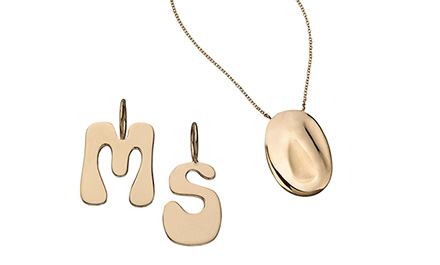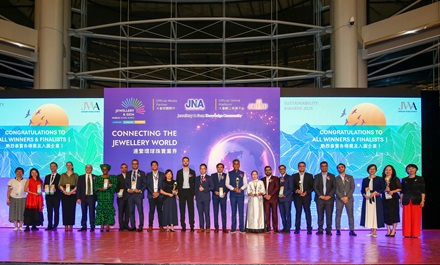This is an expanded and serialised version of the article that first appeared in the JNA January-February 2023 issue.
As JNA enters its fourth decade, it examines the market-shaping developments that will influence the course of the gem and jewellery industry moving forward – from evolving consumer priorities, emerging hubs and business strategies to technological advances, product innovation and the metaverse. Here is the first instalment.
1. Gen Z
Along with their millennial counterparts, Gen Z consumers are expected to form over 60 per cent of the luxury market by 2025. This powerful consumer force is already dictating design, retail and business trends today. Born 1997 onwards, Gen Z consumers are socially responsible, tech-savvy and independent thinkers. They support brands that share their values, seek meaningful purchases and appreciate experiential retail. Securing business tomorrow means getting in with these next-generation customers today.
In its 2022 Diamond Insight Report, De Beers Group identified ethical assurances, phygital retail strategies, branded offerings and Web3 experiences as the key trends shaping how diamond consumers – in particular, Gen Z – perceive and engage with diamond jewellery. In its survey of 18,000 women in the US, De Beers found that Gen Z consumers were more likely than other generations to examine sustainability credentials, buy items with strong brand stories and purchase online.
Gen Z consumers are expected to drive growth of the diamond jewellery sector. Already, they are a major force in key markets. This consumer segment however seeks and expects more than the usual – in design, approach, experience.
Creativity and innovation are key to meeting their expectations. Think gender-fluid designs, non-traditional materials, jewellery bars in stores, the right messaging on social media, and the engaging story behind the brand and the jewellery piece.
2. ESG
Gen Z consumers take Environmental, Social and Governance (ESG) matters to heart. Sustainability credentials are closely examined while values underpin purchases.
The focus expands beyond the environment, with attention being placed as well on the effect of production on local communities, among others. Also of concern are social conditions, workplace practices, diversity and inclusion, among others - essentially the impact of a company's business on people and the planet. The response of stakeholders in the jewellery industry range from grassroot livelihood programmes and local scholarships to tree-planting exercises or donation drives for every sale and the use of recycled materials for packaging and operations.
Studies also show that Gen Z buyers were willing to spend more on a product with strong sustainability credentials. But ESG awareness is not confined to the youth as more consumers across age groups are demanding socially responsible products. Values trump value, and companies with proven and heartfelt commitment to ESG causes gain consumer loyalty and acceptance.
3. Responsible sourcing and mining
An integral part of the ESG conversation is responsible sourcing and mining. More designers and manufacturers use recycled metals, select mine-to-market gems with a clear chain of custody or with solid sustainability backing and reward ESG efforts with business.
Mining technology is also increasingly sophisticated, resulting in responsible and sustainable operations. Belmont, for one, is building a 1.5MV photovoltaic power plant that will generate clean energy from the sun. Once fully implemented, the plant will allow the emerald miner to operate with zero emissions. Fura Gems is working towards RJC (Responsible Jewellery Council) certification for the company and all its mining locations. Its Australian site is already registered with RJC.
Demand is such that WSO (World Sustainability Organisation) Friends of the Earth offers a Sustainable Mining Certification. This is granted following a third-party audit to verify that the product conforms to specific sustainable mining standards and requirements.
See JNA's upcoming March-April 2023 issue for our special report on ESG, covering initiatives in the jewellery trade and the responsible sourcing of gemstones.
4. Traceability
As provenance grows in importance to consumers, traceability measures are gaining ground. By tracking a gem’s journey from mine to market, blockchain initiatives build trust and enhance the selling narrative. Initially applied to diamonds, traceability programmes now extend to coloured gemstones and, most recently, the authentication of bespoke fine jewellery.
Gubelin's Emerald Paternity Test arguably got the ball rolling by tracing the stone's journey from the rough to the jewellery piece. The recently launched Provenance Proof Marketplace for traceable gems indicates the growing demand for transparency and sustainable sourcing among consumers. Powered by Provenance Proof and Everledger, the online marketplace facilitates access to and the sale of transparently traded gemstones.
For its part, Singapore jeweller Gems Origin has adopted blockchain technology to authenticate fine jewellery pieces. Each gem sold and crafted into a fine jewellery piece by the company comes with a certificate of authenticity to be placed on the blockchain to ensure integrity and security. The certificate contains information such as the size, type and number of gemstones used; the dimensions of the piece; and certificates and pictures of the final product. The information can be accessed by scanning a QR code.
5. Market preferences
Next-generation shoppers seek meaningful purchases thus jewellery of special import to them would be their pick. Aside from the company's or brand's ESG profile, they examine whether the piece reflects their personality and worldview. The greater challenge though is persuading these consumers to opt for jewellery over other luxury items or pursuits such as gadgets, experiences and travel. Really impressing the value and relevance of the piece to their lives is one way to go.
When asked what they perceive as the greatest challenge facing the gem and jewellery industry, many stakeholders cite the changing priorities of today’s consumers. Jewellery, they note, is losing out to other luxuries. Those who do value jewellery often opt for simpler pieces or more meaningful ones.
The world is also returning to normal, which honestly is not as far removed from the previous state of normalcy as one would have expected. Though digital means kept the lines of trade and communication open during the pandemic, they also reaffirmed the importance of face-to-face interaction. And while stimulus packages and the lack of options fuelled jewellery retail sales in some markets, traders and retailers are seeing consumer spend shifting to revenge travel and the latest technology.
The more significant changes are however taking place in consumers’ mindsets. Young and old alike are rethinking life choices and placing greater priority on personal connections, peace of mind and wellbeing. It may therefore take a bit more convincing for them to purchase jewellery pieces, other than everyday adornments and perhaps customary pieces for specific life moments. The industry needs to win over the hearts and minds of younger consumers by clearly showing the relevance of gems and jewels to their lives, that of their peers and of their loved ones. Gems and jewels are thus not just products but the embodiment of life moments.
Of course, there will always be jewellery aficionados and collectors of all ages who will keep the industry afloat. But winning over the consumer of tomorrow will secure the industry's sustainable growth and development.
Next instalment: sales, marketing and retail channels












